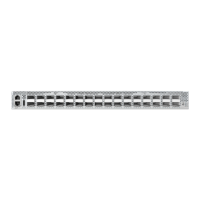– 1019 –
45 IP ROUTING COMMANDS
After network interfaces are configured for the switch, the paths used to
send traffic between different interfaces must be set. If routing is enabled
on the switch, traffic will automatically be forwarded between all of the
local subnetworks. However, to forward traffic to devices on other
subnetworks, either configure fixed paths with static routing commands, or
enable a dynamic routing protocol that exchanges information with other
routers on the network to automatically determine the best path to any
subnetwork.
This section includes commands for both static and dynamic routing. These
commands are used to connect between different local subnetworks or to
connect the router to the enterprise network.
GLOBAL ROUTING CONFIGURATION
.
Table 139: IP Routing Commands
Command Group Function
Global Routing
Configuration
Configures global parameters for static and dynamic routing,
displays the routing table and statistics for protocols used to
exchange routing information
Routing Information
Protocol (RIP)
Configures global and interface specific parameters for RIP
Open Shortest Path First
(OSPFv2)
Configures global and interface specific parameters for OSPFv2
Table 140: Global Routing Configuration Commands
Command Function Mode
ip route Configures static routes GC
maximum-paths Sets the maximum number of paths allowed GC
show ip route Displays specified entries in the routing table PE
show ip route database Displays static or dynamically learned entries in the
routing table
PE
show ip traffic Displays statistics for IP, ICMP, UDP, TCP and ARP
protocols
PE

